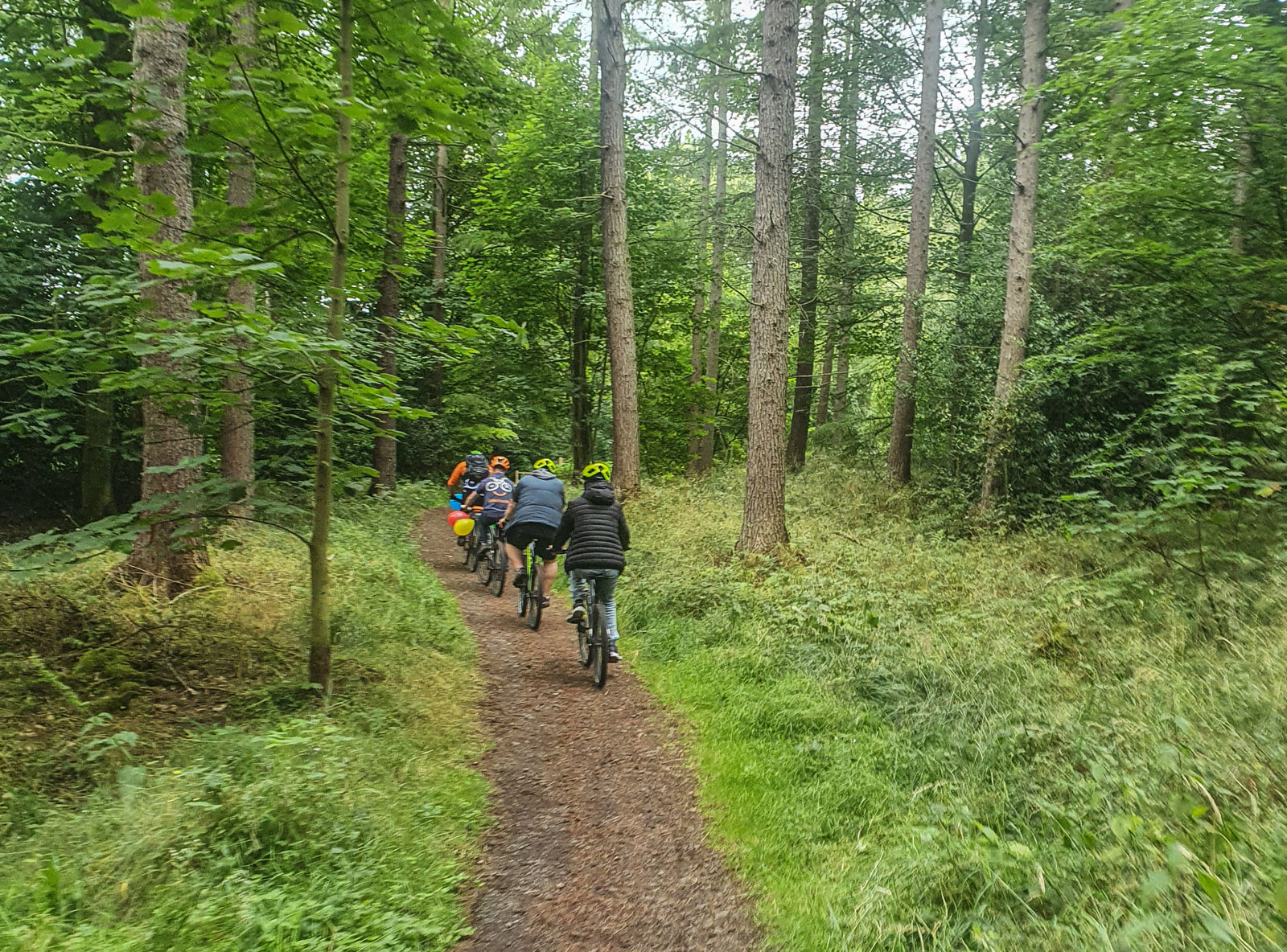Summary
This research project gathered evidence to better understand, enable and support public access to woodlands.
The England Tree Action Plan incorporates an action to ensure that the provision of safe public access is a feature of as many woodlands as possible. The Woodland Access Implementation Plan also sets out ambitions to support public access.
There are currently evidence gaps in terms of meeting the actions in these plans and this research contributed directly to addressing these. Evidence outlines that public access to woodlands is important for people’s health and wellbeing and helps connect people to the natural environment. It can also contribute to people valuing trees and woodlands, which can sometime lead to people acting for nature through, for example, getting involved in volunteering activities.
This project was part of the Nature for Climate Fund.

Research Objectives
- Better understand the existing quality and quantity of public access to woodlands
- Identify effective solutions for enabling and encouraging land managers to maintain existing access and provide new/further access
- Explore how to enable diverse publics to make the most of existing and new public access
Findings and Recommendations
Approximately 26.6% of the area of England’s woodlands are estimated to have statutory or permissive public access, with 73.4% having no known public access. The inclusion of public rights of way in the analyses increased the estimated population with woodland access. As public rights of way offer a legitimate woodland experience, these values more accurately represent the provision of publicly accessible woodland. The lower levels of woodland access calculated for areas in Index of Multiple Deprivation deciles 1-4 aligns with previous work and highlights the need for additional support to overcome barriers to woodland access already experienced by this section of the public.
Land manager objectives
Attending to land manager objectives is crucial for understanding attitudes and willingness to increase public access. Public access is generally seen to negatively impact environmental objectives (with a few exceptions) and as unlikely to positively impact economic objectives. It typically has a negative impact on personal amenity concerns (such as personal enjoyment or privacy) but can further public amenity objectives.
Even so, while few land managers are willing to provide unrestricted open access, large numbers appear open to the prospect of permissive access – providing access on a spatially or temporally restricted basis, potentially for one-off or specific reasons. Finding ways to support land managers to better influence the behaviour of visitors on-site will help address some of their concerns around the impact of public access.
Access and barriers
The meaning of access varied widely among public participants and understanding of access terminology also varied. Frequency of woodland visits and interest in different woodland activities varied significantly across socio-demographic groups. Several interacting physical, psychological, institutional and cultural barriers to accessing woodlands were identified. These barriers were often linked to health and life stage as well as being intersectional across multiple socio-demographic characteristics.
Opportunities for increasing access to woodlands for diverse groups included those related to awareness, information, infrastructure (physical and social) and facilities. Community engagement is vital as encouragement for publics to visit woodlands. Feelings of belonging are also important for access, as personal needs, recreational interests and motivations may vary. Approaches to offering support should be tailored to specific groups while also considering inclusivity in relation to intersectionality and life stage.
Latest Update
We developed three key work packages (WP) and through these undertook the following.
WP1
- Spatially mapped accessible woodlands and identified what proportion of people have access to woodlands within walking distance of where they live.
- To learn more about the research and see the distribution of accessible woodlands, view the ‘Public access to woodlands in England’ StoryMap. An “Access to woodland in England” report is also available to review. This publication complements the ‘Access to green space in England’ official statistic in development which calculated the distance to publicly accessible green space for every household in England measured along a network of walkable streets and paths.
WP2
- Carried out interviews, workshops and a survey to explore how different groups of land managers might be encouraged and supported to provide public access to woodlands.
- This included the British Woodland Survey 2024, completed by the Sylva Foundation working with Forest Research, which explored attitudes, experiences and actions among private land managers to public access in their woodlands.
WP3
- Explored how to encourage and enable access to woodlands by diverse publics through a survey, interviews and workshops. We explored what access means to people and what are effective approaches that enable under-represented groups to access woodlands.
We carried out three literature reviews. One aimed at understanding the barriers that prevent different groups within society from accessing woodlands and exploring interventions that have enabled and encouraged access. Another review explored land managers’ attitudes to public access and any support or incentives that might encourage them to allow access by the public to their woodland. The final review focused on the economics literature to identify costs and benefits of providing public access. We designed a survey for land managers and questions for interviewing members of the public. Furthermore, we brought together different spatial dataset on which woodlands have public access.
The research project lasted two and half years and ended in March 2025.
Downloads

Enabling and Encouraging Access to Woodlands for Diverse Publics

Public Access WP3 Economics Literature Review

Evidence review summary: Land managers and public access in England

Access to woodland in England

Understanding and enabling access to woodlands for diverse publics
Funding & Partners
- This project has been funded through the Government's ‘ Nature for Climate Fund’
-
 DEFRA
DEFRA -
Collaborating Partners
-
 Sylva foundation
Sylva foundation -
Key Contributors
- Forestry Commission
- Natural England
- Woodland Trust
- Forestry England
